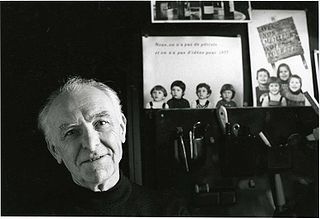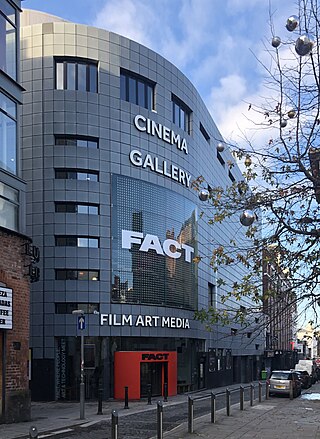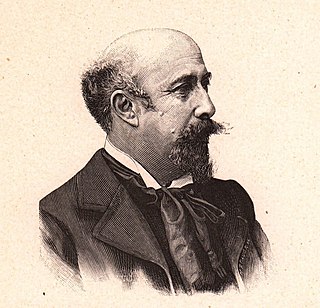
Nantes is a city in Loire-Atlantique of France on the Loire, 50 km (31 mi) from the Atlantic coast. The city is the sixth largest in France, with a population of 320,732 in Nantes proper and a metropolitan area of nearly 1 million inhabitants (2020). With Saint-Nazaire, a seaport on the Loire estuary, Nantes forms one of the main north-western French metropolitan agglomerations.

Biennale, Italian for "biennial" or "every other year", is any event that happens every two years. It is most commonly used within the art world to describe large-scale international contemporary art exhibitions. As such the term was popularised by Venice Biennale, which was first held in 1895. Since the 1990s, the terms "biennale" and "biennial" have been interchangeably used in a more generic way - to signify a large-scale international survey show of contemporary art that recurs at regular intervals but not necessarily biannual. The phrase has also been used for other artistic events, such as the "Biennale de Paris", "Kochi-Muziris Biennale", Berlinale and Viennale.

Daniel Buren is a French conceptual artist, painter, and sculptor. He has won numerous awards including the Golden Lion for best pavilion at the Venice Biennale (1986), the International Award for best artist in Stuttgart (1991) and the prestigious Premium Imperiale for painting in Tokyo in 2007. He has created several world-famous installations, including "Les Deux Plateaux"(1985) in the Cour d'honneur of the Palais-Royal, and the Observatory of the Light in Fondation Louis Vuitton. He is one of the most active and recognised artists on the international scene, and his work has been welcomed by the most important institutions and sites around the world.

Robert Doisneau was a French photographer. From the 1930s, he photographed the streets of Paris. He was a champion of humanist photography and with Henri Cartier-Bresson a pioneer of photojournalism.
An art centre or arts center is distinct from an art gallery or art museum. An arts centre is a functional community centre with a specific remit to encourage arts practice and to provide facilities such as theatre space, gallery space, venues for musical performance, workshop areas, educational facilities, technical equipment, etc.

The Musée du Quai Branly – Jacques Chirac, located in Paris, France, is a museum designed by French architect Jean Nouvel to feature the indigenous art and cultures of Africa, Asia, Oceania, and the Americas. The museum collection comprises more than a million objects, of which 3,500 are on display at any given time, in both permanent and temporary thematic exhibits. A selection of objects from the museum is also displayed in the Pavillon des Sessions of the Louvre.

Lefèvre Utile, better known worldwide by the initials LU, is a French manufacturer brand of biscuits, emblematic of the city of Nantes. The brand is now part of US confectionery company Mondelēz International since 2012, after splitting of its previous owner Kraft Foods Inc., which had acquired it as part of its acquisition from Groupe Danone in 2007. The Petit-Beurre biscuit remains the flagship product alongside the Ladyfinger, Champagne, Petit four, Prince de LU, Pim's, Paille d'Or, etc.

Nuit Blanche is an annual all-night or night-time arts festival of a city. A Nuit Blanche typically has museums, private and public art galleries, and other cultural institutions open and free of charge, with the centre of the city itself being turned into a de facto art gallery, providing space for art installations, performances, themed social gatherings, and other activities.

Patrick J. Gyger is a Swiss historian and writer. His family left Brazil in 1979 and moved to Rolle in Switzerland. He studied medieval history at the University of Lausanne in 1989.

The Château de Goulaine is a historic château located in the Loire Valley wine region near Nantes, France. The property has been home to the family of the marquis de Goulaine for over a thousand years. The Goulaine name is also used for estate-bottled wine that is produced at the property.

The Fine Arts Museum of Nantes, along with 14 other provincial museums, was created, by consular decree on 14 Fructidor in year IX. Today the museum is one of the largest museums in the region.

FACT Liverpool is a new media arts centre in Liverpool, England. The building houses galleries, a cinema operated by Picturehouse, a bar and a café.

The Rue Burdeau is a street located in the 1st arrondissement of Lyon, at the bottom of the slopes of La Croix-Rousse, just above the Église Saint-Polycarpe, between the Saône and the Rhône. It leads at one side to the Montée Saint-Sébastien and at the other to the Jardin des Plantes and crosses the montée de la Grande Côte which renovation is completed. The street belongs to the zone classified as World Heritage Site by UNESCO.
Jean Blaise is a French artistic director for special events.

Hélène Breschand is a French harpist, composer and improviser. Breschand leads a career both as a solo artist as well as in ensemble work, playing both a contemporary repertoire and premiering new works as much as she plays improvised music and musical theater. She is a musician who plays on the verge of several genres ranging from contemporary music to jazz. She plays both written and improvised music.

Luigi Loir was a French painter, illustrator and lithographer.

The Maison Moos, later called the Galerie Moos, was an art gallery and auction house founded in 1906 in Geneva by the art dealer Max Moos. The gallery closed in 1976.

Pauline Isabelle Lefèvre-Utile (née Utile) founded the Lefèvre Utile (LU) company with her husband Jean-Romain Lefèvre in 1854.





















